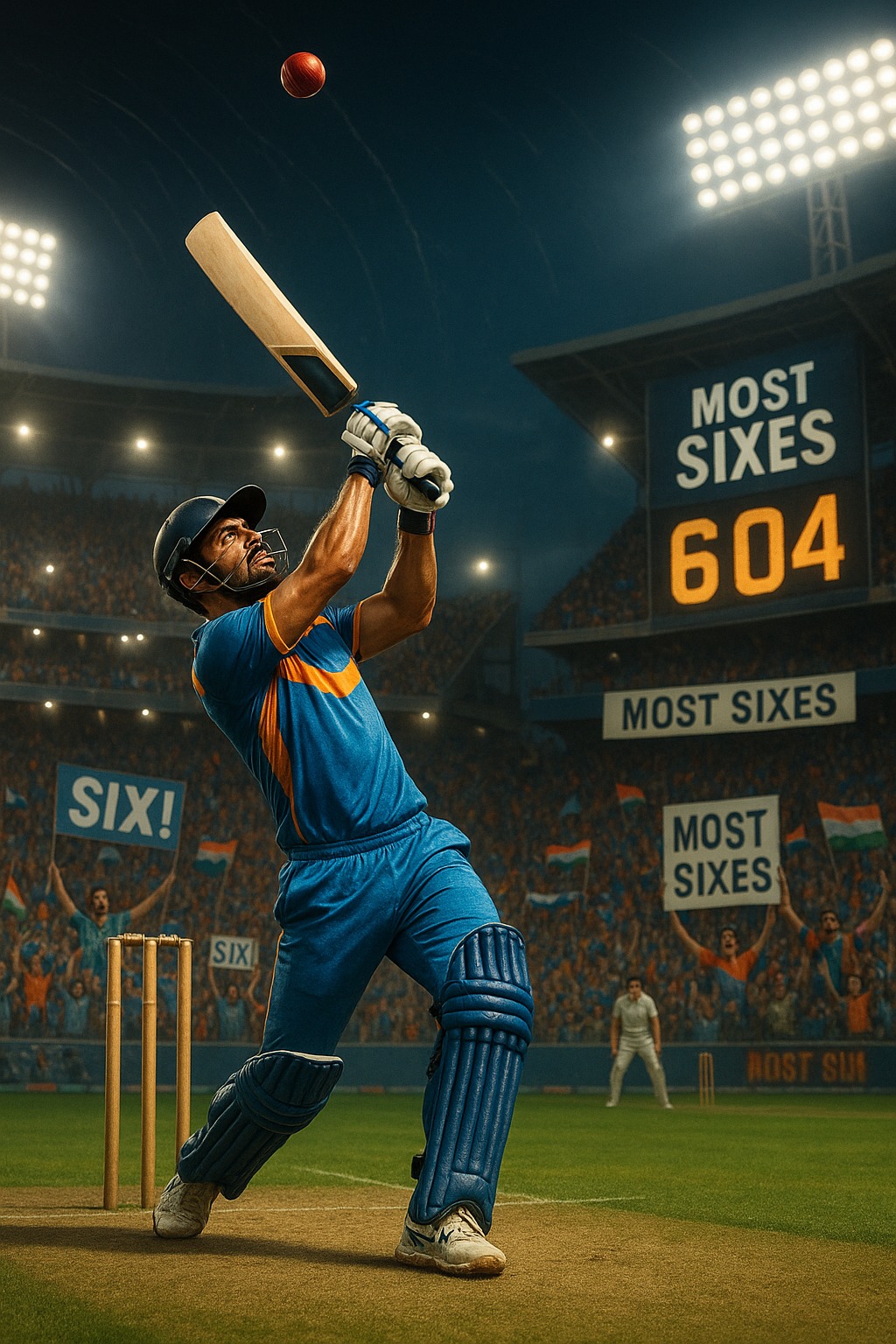Cricket has evolved from a gentleman’s game into a power-packed sport. Among the most thrilling elements in modern cricket is the six—a shot that clears the boundary without bouncing. Over the years, some players have mastered this art. This article explores the cricketers who have hit the most sixes in international cricket, leaving fans stunned and bowlers frustrated. These are the top six hitters the world has ever seen
The Evolution of Six-Hitting in Cricket
In the early days, cricket focused on technique and patience. Six were rare and celebrated. However, with the arrival of limited-overs formats—especially T20s—the mindset changed. Players began taking more risks, and international cricket sixes became common. Today, smashing big six is not just entertainment; it’s a strategy.
Top Players with the Most Sixes in International Cricket
Here are the top names who dominate the charts for hitting the most six in all formats combined—Tests, ODIs, and T20Is. These cricket power hitters are legends in their own right.
1. Chris Gayle (West Indies) – 553 Sixes
Known as the “Universe Boss”, Gayle tops the cricket six records. His towering six have thrilled fans across the world. Whether playing Tests or T20s, he brings raw power and effortless timing.
2. Rohit Sharma (India) – 539 Sixes*
The Indian opener has climbed quickly up the ranks. Rohit’s pull shot is famous, and his ability to clear the ropes with ease makes him one of the most consistent six hitters in cricket.
3. Shahid Afridi (Pakistan) – 476 Sixes
Afridi’s aggressive style was ahead of his time. Nicknamed “Boom Boom”, he could change the game in minutes with his big sixes. His six often came at crucial moments, setting cricket six records.
4. Brendon McCullum (New Zealand) – 398 Sixes
The former Kiwi captain brought flair and firepower. His fearless approach inspired a new generation of six-hitting batsmen.
5. Martin Guptill (New Zealand) – 383 Sixes
Guptill quietly built a strong record. His long reach and timing helped him become one of the most dependable cricket power hitters.
6. MS Dhoni (India) – 359 Sixes
Dhoni’s sixes under pressure are legendary. Whether finishing games or building an innings, he delivered big sixes with surgical precision.
Why Sixes Matter in Modern Cricket
Cricket six legends have shown that sixes are more than just flashy shots. They shift momentum, break partnerships, and energize crowds. In limited-overs matches, one over filled with international cricket sixes can turn the game. This is why modern six-hitting batsmen train specifically for power and timing.
Six-Hitting Across Formats
- Test Cricket: Sixes are rare but valuable. Players like Ben Stokes and Adam Gilchrist proved that even in Tests, six hitters in cricket can change the game.
- ODIs: The balance between risk and reward makes sixes crucial in the final overs. Most sixes often come from middle-order finishers.
- T20s: This format thrives on big hits. Players such as Jos Buttler, Glenn Maxwell, and David Miller are known for explosive cricket power-hitting.
The Science Behind a Six
Hitting a six requires more than strength. Timing, bat speed, footwork, and angle play key roles. Today’s six-hitting batsmen use analytics to study their six zones and improve consistency.
Future of Six-Hitting
With cricket leagues growing worldwide, cricket’s six records will keep getting broken. Young players now learn cricket power hitting early. Future stars may surpass even the highest six tallies seen today.
Conclusion
The players with the most sixes in international cricket have transformed the way we view the game. Their fearless batting and massive hits entertain millions. As formats continue to evolve, six-hitting will remain a major highlight and a game-changer. Whether it’s Gayle’s brute force or Rohit’s elegance, the six remains cricket’s most thrilling stroke. These cricket six legends have truly set the bar high for future generations.



